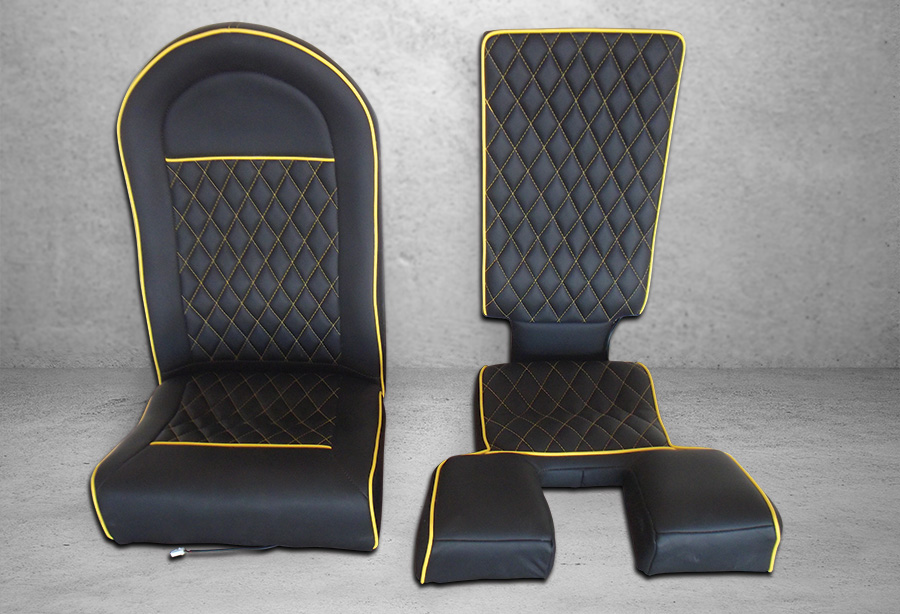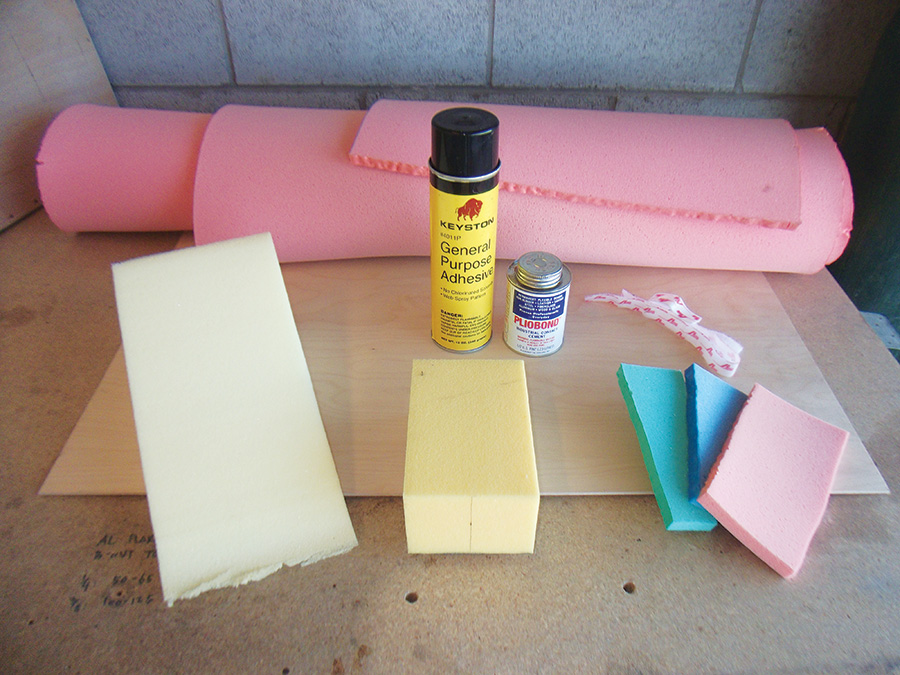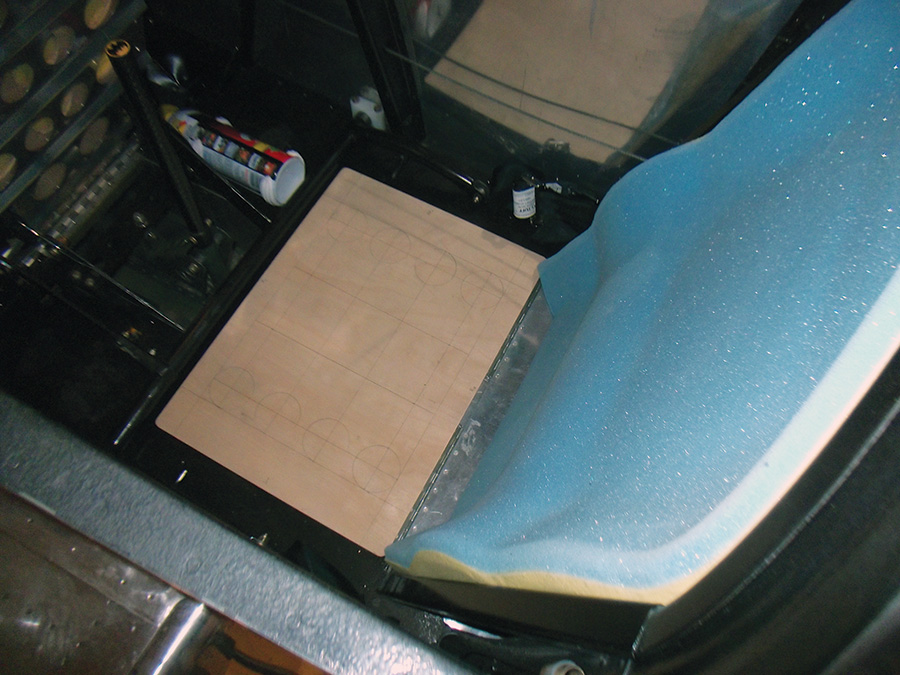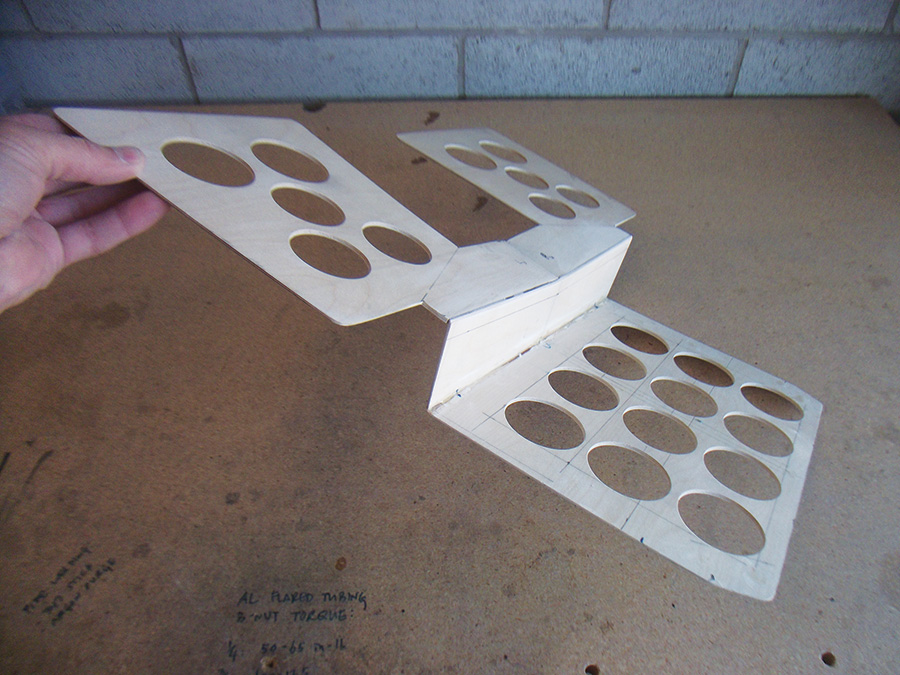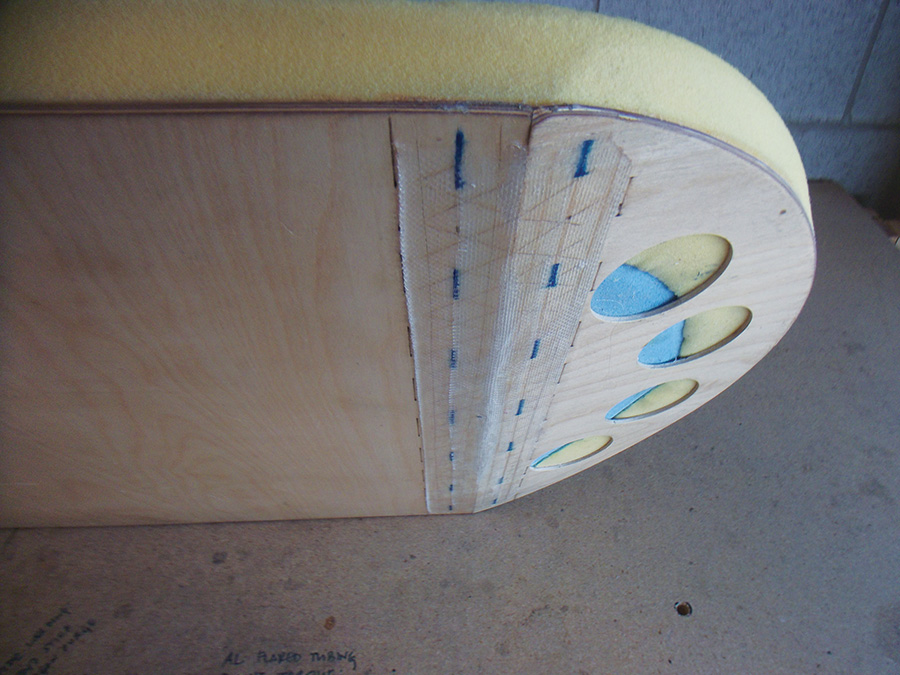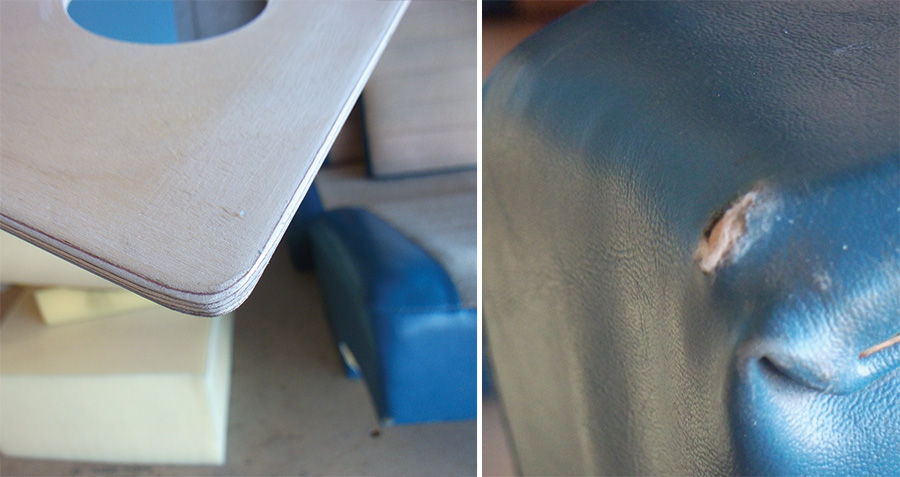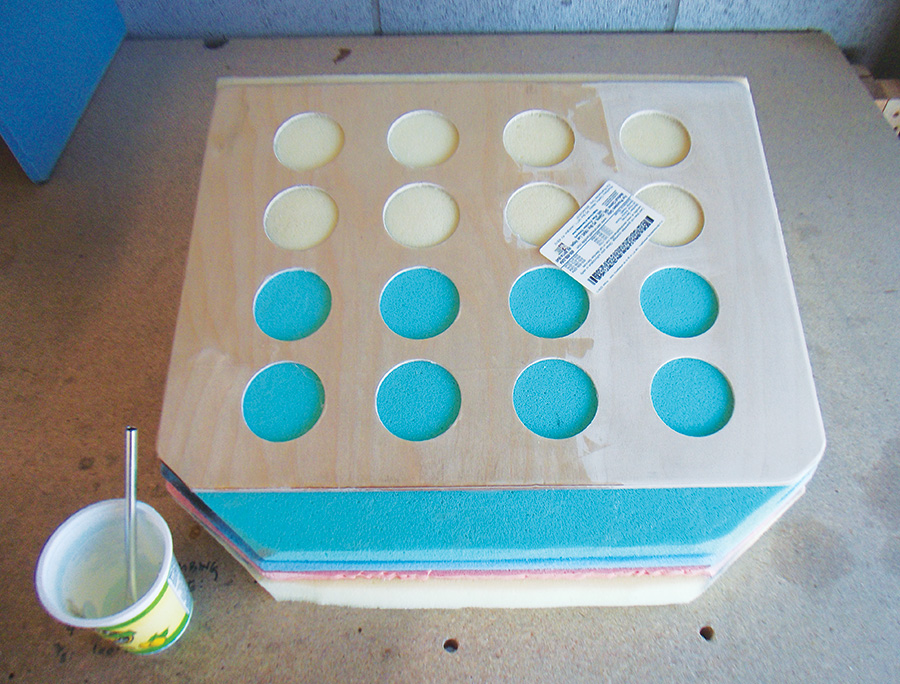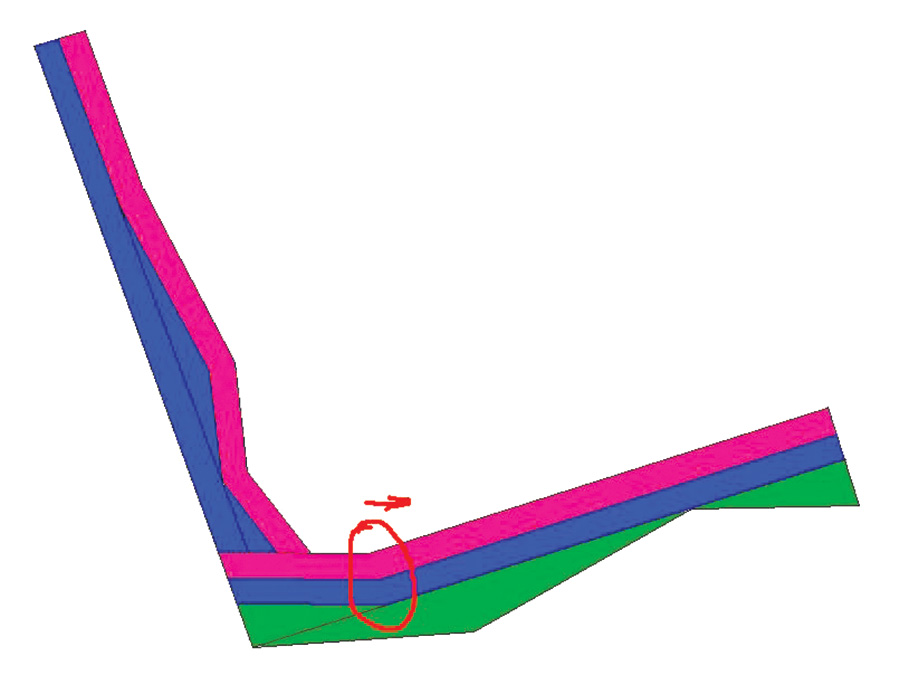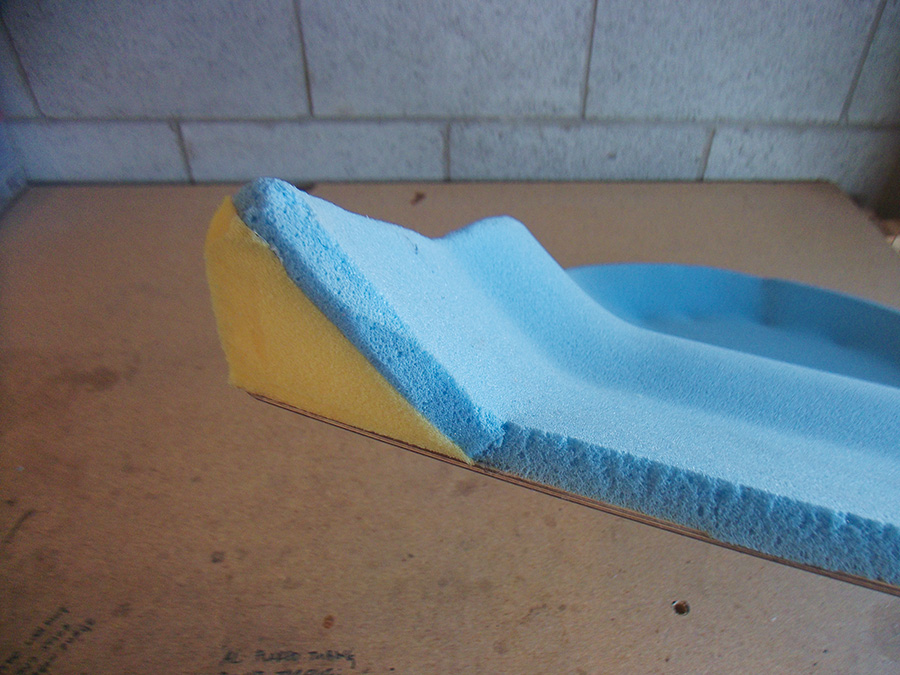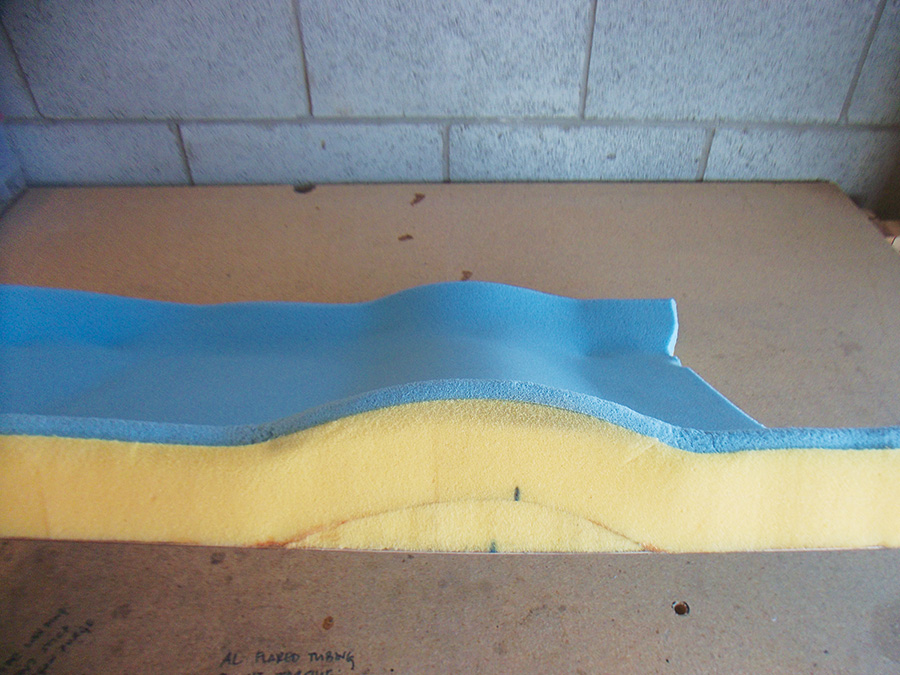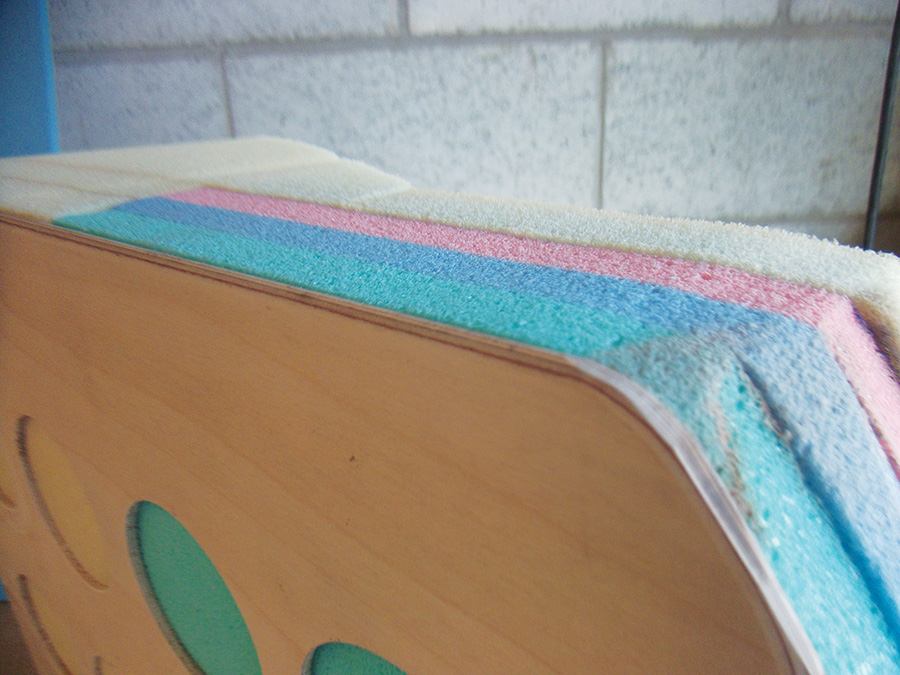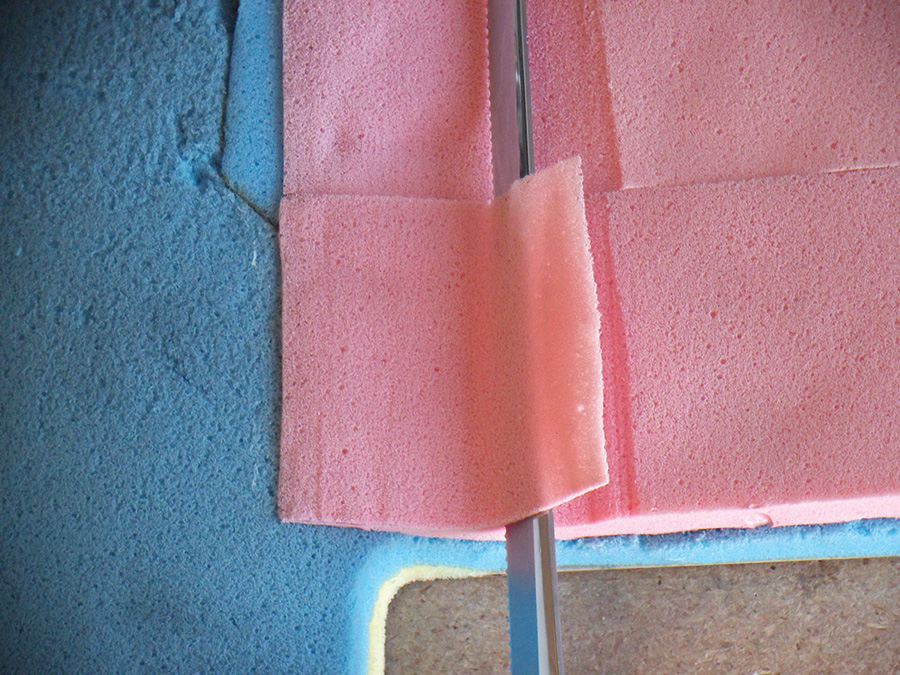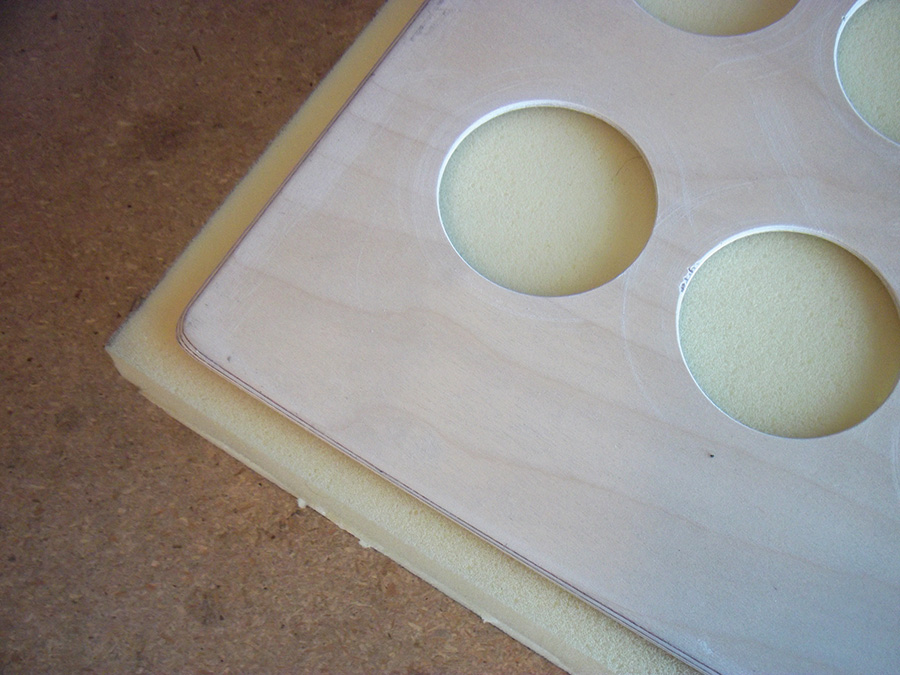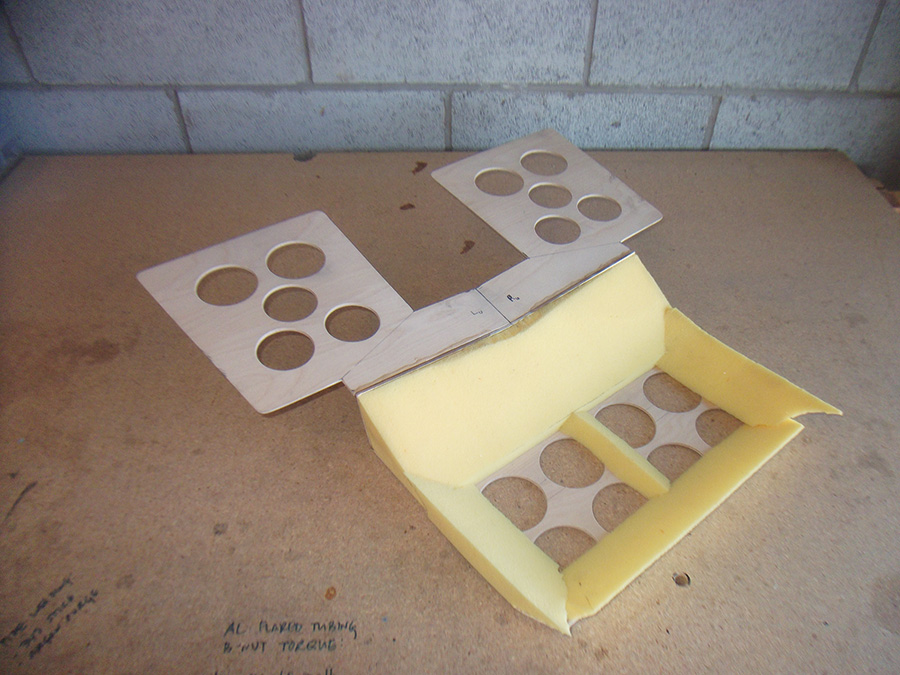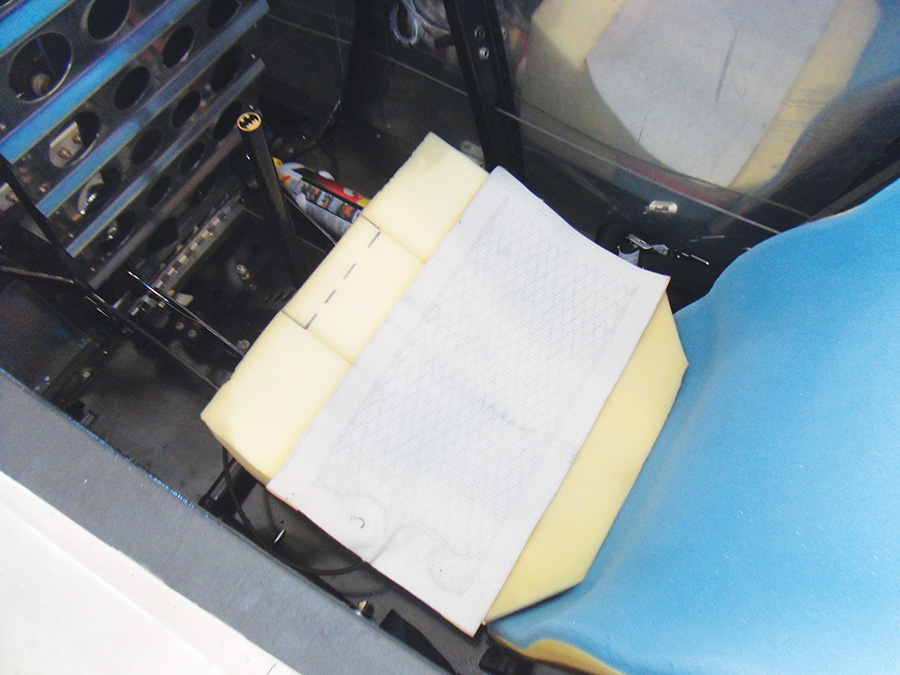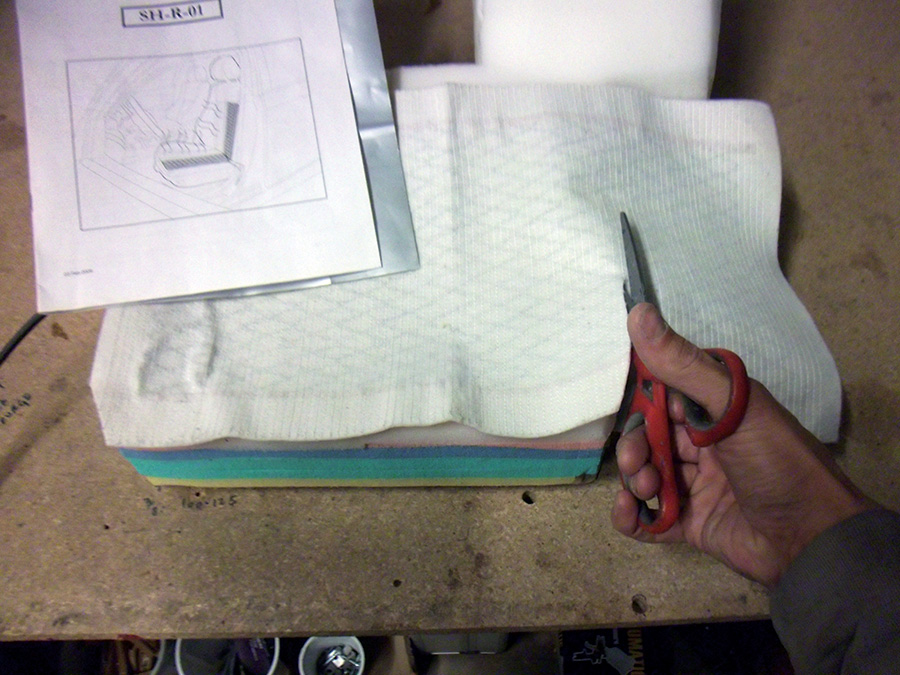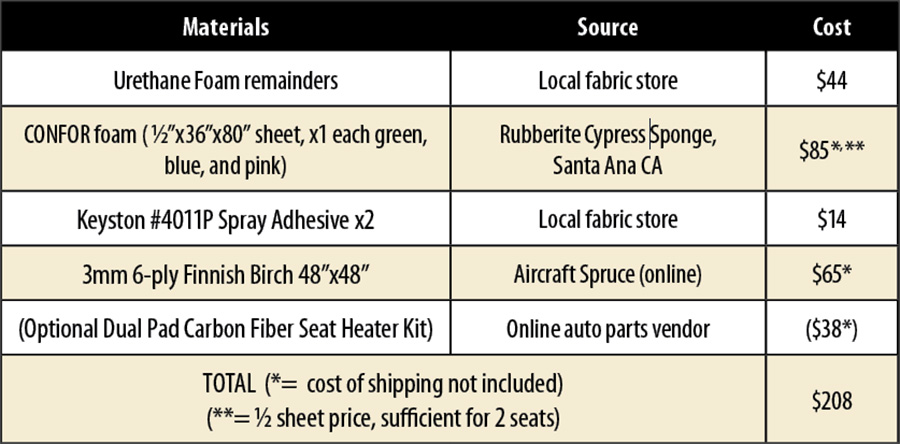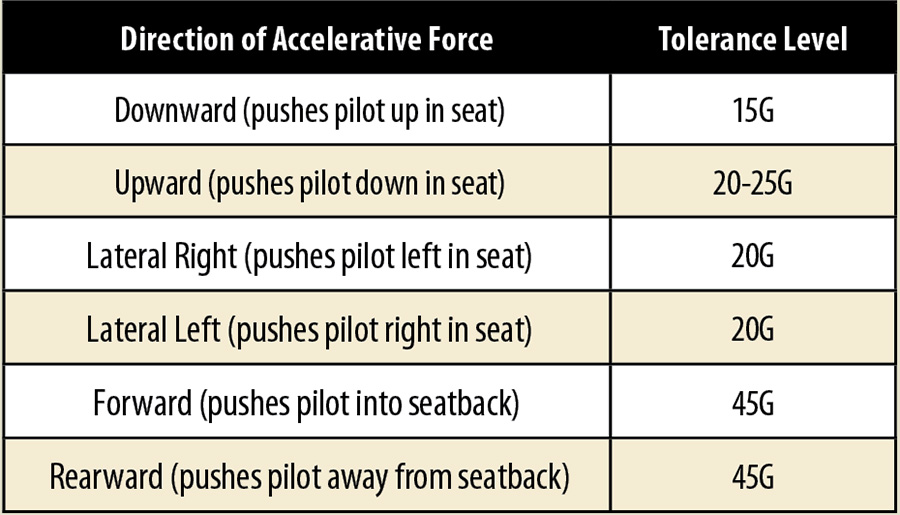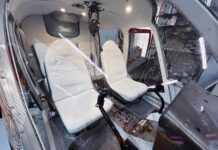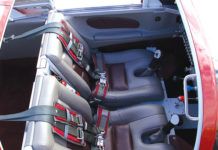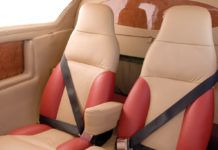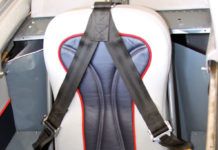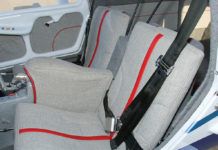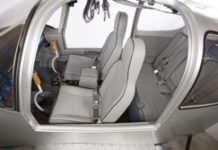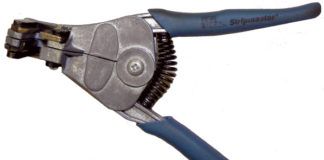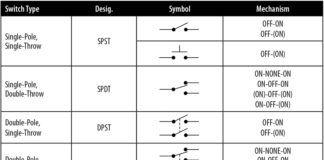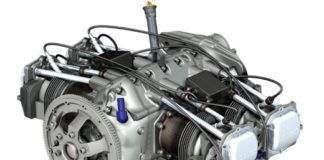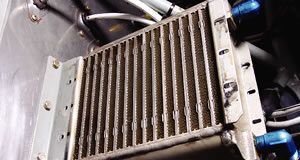The cost-benefit tradeoff of DIY is that, typically, the more of a project you do yourself, the cheaper it will be—but also the longer it will take. Sometimes, if you’ll only be making pennies on the hour for your labor, it pays to pay a professional (you’ll often hear this said about drywalling of owner-built houses, for example). In other cases though, you can save a substantial amount of money for a minimum investment in time and materials. Depending on your mission (and derrière) profile, DIY seats can definitely fall in the latter category.
I DIY’d just about everything on my RV-4, but when it came to paint and seats, well, I was willing to splurge a little and farm out some of the work. But just a little; I did the grunt work of pin-hole filling and prime-and-sand on the fiberglass to keep the paint bill down. Likewise with seats, I figured I could take the work to the penultimate step myself, learn some new skills, and then let a professional put on the exterior that I (and my passengers) will actually see.
Materials for DIY seat. Foam (L to R): Medium-density “rubberized” urethane foam, high-density “tractor” foam, and high-, medium-, and low-density CONFOR foam. Large roll of pink CONFOR foam in the back. Foam-compatible spray adhesive, as well as brushable Pliobond for touchups. Velcro may be necessary to hold cushions in place on some planes. Materials are resting on a sheet of 3mm birch ply used as a backing frame.
Last year KITPLANES® featured an article by upholsterer and pilot Mike Manning about working with Axel Alvarez to custom design the interior for Alvarez’s RV-4. Manning’s article mostly focused on design and collaboration concerns. In this article (consider it a sequel to Manning’s), we’ll take the next step and explain how to fabricate the actual cushions before heading off to the upholstery shop. In addition to saving a fair bit of money, you can be sure the seats will fit you and your plane perfectly, and you’ll even have a chance to sit (or fly) in them to make sure they feel just right before actually having them upholstered.
However, before embarking on this project, do read Manning’s article (“The Owner Assisted Interior,” KITPLANES® June 2013), and find yourself an upholsterer who is willing to collaborate and can give you advice and suggestions regarding your intended design. In a future article, we’ll cover making a control stick boot, so be sure to tell the upholsterer to save the scraps from your job—those should be sufficient to make a couple of boots.
Overview
The majority of Experimental aircraft seats consist of various layers or sections of foam bonded together and upholstered in leather, fabric or synthetic materials. A backing frame may be used, although it appears as though most E/A-B vendor seats are more like cushions, in the sense that they lack a rigid frame and instead fit snugly (often secured with Velcro) into a pre-existing airplane seat structure that provides support. The upholstery may be permanently attached, or removable with zippers and/or Velcro. Some builders also choose to wire their seats with aftermarket automotive-type seat heaters.
Since this job is primarily about building with foam, let’s define three common types of foam available to a builder:
1. Closed-Cell Foam: Fabric stores (Jo-Ann Aviation, as a friend calls one chain) typically carry both closed- and open-cell foams. Closed-cell foam tends to be tougher and heavier than open-cell foam and is impervious to liquids. Neoprene and polyethylene foams are used for camping ground pads, flotation devices, etc. but are not typically used in upholstery, so you can ignore these.
2. Open-Cell Foam: These foams are typically urethane/polyurethane based, come in varying densities, and some have a distinctly sponge-rubber feel to them.
• Tractor/Motorcycle Foam: Not an official name but it seems to be used often enough by vendors to describe a rigid, high-density, non-rubbery open-cell foam. It is commonly yellow, black, or “chopped” (i.e., a rebonded mix). If you’ve ever sat very long on an old tractor or motorcycle, you’ll know that you don’t want to be sitting on a seat made of this stuff. However, the rigid nature of the material makes it excel- lent for providing structural shape to the seats in the form of bolsters (wedges), lumbar sup- ports, etc. Think of it as a base contouring foam.
• Sponge-Rubber Foam: Not a real foam rubber, but it feels that way. It has a bouncy, pleasant sponginess that is OK as a veneer layer, or for bolsters and lumbar support, but it should not be used as the primary cushion itself (see sidebar “Safe Seat Science”). Note that it is less rigid and more cushy than tractor foam, but not as easy to shape.
3. Viscoelastic Foam: Commonly called memory foam, an endless variety of viscoelastic foams are available, with CONFOR foam generally used for aviation purposes. It’s admittedly expensive, but for the safety of my spine, I don’t mind paying a premium for CONFOR foam. It comes in a variety of colors, with green, blue and pink being the standard colors used in aviation seats. Green is quite firm, blue less so, and pink relatively soft. All colors become increasingly hard the lower the temperature.
The simple rectangular rear bottom seat cushion backing frame is checked for fit. Seat back has already been completed in this photo.
In contrast, the forward backing frame is a more complex shape due to the wingspar that passes below the pilot’s legs. A frame is especially helpful in cases like this where the cushion is not sitting flat. Lightening holes optional.
Corners should be rounded and edges radiused to minimize possibility of frame rubbing through upholstery.
A thin layer of laminating epoxy is applied to the seat back to protect the wood from moisture. Squeegee excess epoxy with a credit card.
Green plays the biggest role in mitigating G-loads in an impact, while pink conforms most easily to the body and provides comfort. A typical layup schedule is one to two inches of green on the bottom of the seat, followed by one to two inches of blue, and finally, one to two inches of pink on top. If canopy clearance is an issue, and you want the thinnest seat/cushion possible, consider one inch of green as an absolute minimum—it won’t be particularly comfortable, but it’s better than nothing. However, based on TR79-22, an aircraft crash survival design guide, and other research, I personally would not feel safe with anything less than two inches. At the other end of the spectrum, some builders like to have several inches of pink on top for maximum comfort.
All of these foams are available from online vendors. However, I’d suggest sourcing your open-cell foam from a local fabric store, since they’ll often have remnants for cheap, and by actually handling various types of foam, you can choose one that feels best to you. They should also be able to sell you a foam-bonding adhesive. I recommend either Keyston #4011P General Purpose Spray Adhesive or 3M FoamFast 74 Spray Adhesive. Regular spray adhesives not designed for foam, such as 3M77, are not recommended—they appear to bond at first, but after a few days the foam will delaminate.
CONFOR foam is available from the usual aviation hardware vendors, although they typically sell relatively small pieces. I found Rubberite Cypress Sponge of Santa Ana, California, to offer excellent full-sheet prices; they are happy to sell to individuals, but their salespeople want a company name, so be prepared to call yourself “Bud’s Aviation Palace” or whatnot.
Preliminary layout of the foam schedule. A CAD program can let you easily play with dimensions and thickness as in this picture, but a hand-drawn sketch will work just as well. (Illustration courtesy of Tom Wruble)
Either high-density tractor foam or medium-density “rubber” foam can be used for bolsters and lumbar supports.
STEP 1: Rigid frame Construction (Optional)
Although not necessary, a lightweight frame provides a rigid structure that can make assembling your foam layers a bit easier and provides a backing to which the upholsterer can staple the fabric if the upholstery is to be permanently attached. Use a high-quality, lightweight ply such as 3mm 5-ply Finnish birch. If you add lightening holes or make other cutouts to accommodate structure under the seat, be sure to leave at least a 1.5-inch perimeter for the upholsterer to staple to. Application of a thin layer of laminating epoxy to the exposed (i.e., opposite the foam) side gives a nice finished look and helps protect against any liquids that might end up spilling under the seat.
STEP 2: Assemble Foam Schedule
Make a sketch of how you’d like to layer the foam, including any bolsters, lumbar support, etc. This diagram should give consideration to your desired head clearance, safety factor (the more CONFOR foam the better), comfort, and weight (CONFOR foam is moderately heavy).
A variety of tools may be used for shaping open-cell foam. For high-density tractor foam, I prefer to use a bandsaw. In situations where this is not possible, I use an electric carving knife or serrated bread knife. I have also used, with varying degrees of success, a die-grinder with cutoff wheel or grinding bit, belt sander, and X-Acto knife. Different foams shape differently—experiment and see what works. Be careful—band saws and die-grinder attachments can both suddenly grab at the foam if you are not careful. Wear the appropriate safety gear.
For shaping CONFOR foam, one of the neat things about memory foam is that it becomes increasingly hard with lower temperatures (well, not so neat if you are climbing into a cold plane—it can take a while to warm up and conform to your body if you don’t have seat heaters). This makes shaping a piece of cake if you have access to a freezer big enough to put your seats into (either that, or do your seats in the winter!). Once frozen, the CONFOR foam cuts easily with a knife or saw, and shapes beautifully with a vixen file or 80-grit sanding block.
Initially, I’d suggest cutting all your layers slightly oversize. Then before final assembly of your seats with adhesive, stack them per your schedule (you can tack-glue with a glue gun to keep things from shifting if necessary), and either sit in the plane for a few hours (taildraggers propped to the flight angle) reading a book, or go fly. This can provide valuable ergonomic feedback about the comfort of the seats. Due to my height (6 feet 2 inches) and the rather small size of the RV-4 cockpit, I flew for a few months before I finally had a foam schedule that felt right.
Once you are happy with your schedule, go ahead and bond it together, beginning with green to frame and bolsters, blue to green, and finally pink to blue. Occasionally you’ll miss a spot with the spray adhesive and an edge might lift, or corners pull apart. In that case use a bit of Pliobond or a glue gun to re-adhere the delamination.
If using a seat heater, be sure to plan out the placement of pads and routing of wires ahead of time. Wiring, harnesses, Molex connectors, etc. should be installed at the time of wiring the airplane and before the floor is installed. Note that the adhesive for some seat heat pads is not activated until heat is applied. Check with your upholsterer before permanently attaching the pads—some may prefer to adhere the pads themselves later in the process of upholstering.
Most kits come with dual pads, and there’s no reason you can’t run one pad to each seat—just make sure that the pilot and passenger can both reach the on/off switch. If you want separate seat heaters for pilot and passenger, make sure your alternator can handle the load; some of these heaters draw a considerable amount of current.
STEP 3: Trim (Optional)
The final step is to trim the layup (and seat heat pad, if applicable) to the final dimensions. Before doing so, I’d suggest taking the untrimmed seats to the upholsterer to see if they want you to add or subtract an allowance for the finished size. This will also give the upholsterer a chance to let you know if anything needs to be changed or corrected.
Yet another reason to get a shop fridge—to freeze your seats! Frozen Confor foam is much easier to shape than room-temp. Once frozen, even pink Confor will slice paper thin.
That’s a Wrap
DIY-seats are another great way to combine learning with economizing, and unlike other areas of homebuilding, the raw materials are cheap enough that you can practice making a seat or two without a big investment in time or money. In fact, you’ll probably have a fair amount of scraps left over after you cut out your foam patterns—why not use them to practice, and make a cushion for your (or better yet, your spouse’s) car seat or office chair?
CLICK FOR IMAGES Foam bonding sequence: Urethane bolsters are bonded in first, followed by high-, medium-, and low-density layers of CONFOR foam (white “ears” are simply paper masking the forward frame from spray adhesive). Forward thigh supports are sponge-rubber type urethane foam, followed by a final top layer of ½-inch urethane over the whole cushion.
Final check before delivery to upholsterer: Seat bottoms and seat backs fit together without interference, cushions are marked for stick cut-out, and seat heat pad location is checked for adequate power unit harness length.

